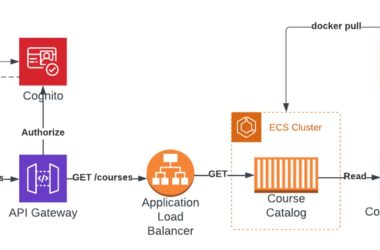In today’s fast-evolving digital economy, financial technology (FinTech) applications have transformed the way individuals and businesses manage money. From mobile payments to digital wallets, investment tracking, and peer-to-peer lending, FinTech apps are driving financial inclusion and convenience on a global scale. However, with this rapid adoption comes the growing challenge of data protection and regulatory compliance. Security is not just a feature for FinTech apps—it’s a necessity.
React Native, one of the most popular cross-platform frameworks, has become a preferred choice for developing FinTech solutions. Its ability to deliver near-native performance, faster development cycles, and a shared codebase for iOS and Android makes it ideal for building modern, scalable financial applications. But to harness its full potential, developers must prioritize security at every stage of the app development lifecycle.
1. Understanding the Importance of Security in FinTech Apps
FinTech apps handle sensitive data such as user credentials, financial transactions, and personal information. Any vulnerability can lead to data breaches, financial losses, or reputational damage. That’s why every FinTech application must comply with industry standards such as PCI DSS, GDPR, and ISO/IEC 27001. Security should never be an afterthought; it should be integrated into the app architecture, design, and development process from the beginning.
When building a custom fintech app development, developers need to incorporate robust authentication methods, encryption protocols, and secure data storage solutions to ensure user trust. This combination of regulatory compliance and technical excellence is what differentiates a reliable FinTech product from a risky one.
2. Choosing React Native for FinTech Development
React Native provides several advantages for FinTech app developers. Its component-based architecture allows the creation of modular and maintainable code, reducing the risk of vulnerabilities. Additionally, React Native supports third-party libraries and APIs, enabling the integration of advanced security features such as biometric authentication, tokenization, and fraud detection tools.
Moreover, React Native’s large developer community ensures regular updates, security patches, and access to best practices. Developers can also use native modules to handle sensitive operations securely while maintaining React Native’s cross-platform efficiency. This hybrid approach ensures both speed and security without compromising user experience.
3. Key Security Measures When Building a FinTech App
Building a secure FinTech app requires implementing several critical security measures. Here are some essential steps every developer should follow:
a. Secure Authentication and Authorization:
Use multi-factor authentication (MFA) and OAuth 2.0 protocols to prevent unauthorized access. Incorporate biometric options such as fingerprint or face recognition for additional protection.
b. Data Encryption:
Encrypt all sensitive data, both at rest and in transit, using robust algorithms like AES-256 and TLS 1.3. Avoid storing plain-text credentials or tokens locally.
c. Secure APIs:
APIs are the backbone of any FinTech application. Always validate requests, use API gateways, and limit access through role-based permissions to reduce vulnerabilities.
d. Regular Security Audits and Penetration Testing:
Conduct periodic code reviews and vulnerability scans. Use tools like OWASP ZAP or Burp Suite to identify potential threats and mitigate them early.
e. Compliance with Financial Regulations:
Ensure your FinTech app adheres to KYC (Know Your Customer), AML (Anti-Money Laundering), and PCI DSS compliance requirements. This will safeguard your app from legal and financial risks.
4. Integrating Secure Payment Gateways
A crucial aspect of FinTech app security is the integration of trusted payment gateways. Using PCI DSS–compliant gateways like Stripe, PayPal, or Razorpay ensures that financial data is encrypted and processed securely. React Native’s flexible ecosystem allows seamless integration with these APIs, enabling secure transactions across platforms.
Moreover, implementing tokenization replaces sensitive payment data with unique identification symbols, reducing the risk of data theft. This makes it nearly impossible for hackers to intercept or misuse transaction information.
5. Protecting User Data and Privacy
Data privacy is the cornerstone of financial applications. Developers should minimize the collection of user data and store only essential information. Using encrypted local databases such as Realm or SQLite, combined with secure cloud storage, helps maintain confidentiality.
React Native also supports tools like Keychain (iOS) and Keystore (Android) to store sensitive information such as access tokens and passwords securely. Implementing permissions wisely and providing transparency in privacy policies builds user trust and regulatory compliance.
Midway through the development process, businesses often partner with a fintech software development company to ensure best practices, optimize security architecture, and meet compliance standards. Such partnerships bring specialized expertise in encryption, authentication frameworks, and secure API management — vital components in FinTech security.
6. Real-Time Fraud Detection and Monitoring
Fraud prevention is one of the top priorities in FinTech app development. React Native allows the integration of AI-driven fraud detection systems that analyze transaction patterns and detect anomalies in real time. Machine learning algorithms can predict and block suspicious activities before they cause harm.
Implementing server-side monitoring tools like Firebase Crashlytics, Sentry, or Datadog helps track errors and potential vulnerabilities continuously. Real-time alerts enable teams to act quickly against suspicious events, minimizing risk exposure.
7. Continuous Updates and Maintenance
Security threats evolve constantly, and so should your FinTech app. Regular updates, patch management, and code refactoring are crucial to staying ahead of new vulnerabilities. Establishing a continuous integration and continuous deployment (CI/CD) pipeline ensures that updates are tested and deployed securely.
React Native’s hot reload feature makes it easy to push minor fixes and enhancements quickly. However, major security patches should always undergo comprehensive testing before rollout to avoid compatibility issues or performance degradation.
8. Testing, Compliance, and Deployment
Before launching a FinTech app, rigorous testing is mandatory. Conduct unit, integration, and end-to-end testing to ensure all security mechanisms work as intended. Tools like Jest and Detox can be used for automated testing in React Native environments.
Additionally, document every security measure and ensure compliance certifications are up-to-date. This step is crucial when submitting apps to the App Store or Play Store, as both platforms have stringent financial app guidelines.
9. The Role of React Native in FinTech Innovation
React Native’s flexibility and scalability make it an excellent framework for innovation in the FinTech domain. Its ability to integrate with AI, blockchain, and real-time analytics tools empowers developers to create intelligent, secure, and user-friendly financial platforms. As FinTech continues to evolve, frameworks like React Native will play a key role in making financial services more accessible, personalized, and secure for global users.
Conclusion
Building a secure FinTech app using React Native requires more than just strong coding skills—it demands a deep understanding of cybersecurity, regulatory compliance, and financial workflows. By following best practices in encryption, authentication, and API protection, developers can create apps that inspire trust and deliver outstanding user experiences.
As businesses look to scale and innovate in the digital finance space, investing in the right technology and security strategy is essential. Partnering with professionals offering Mobile Marketplace Development Services can further enhance your app’s reach, usability, and data protection, ensuring your FinTech product stands strong in an increasingly competitive market.





